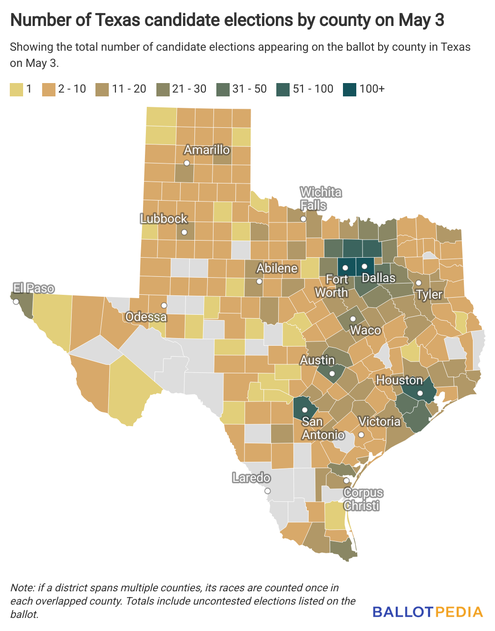- Sections :
- Crime & Public Safety
- Restaurants & Food
- Sports
- More
A look at Texas' May 3 local elections
THE WOODLANDS, TX -- On the topic of local elections, on May 3—yes, a Saturday—Texas voters will head to the polls to decide on several local elections. Texas holds local elections twice per year, in May or November. Local law largely determines the exact date.
On May 3, we're covering 2,053 elections with 4,747 candidates. Those elections will occur mostly in cities and school districts, with 909 city council elections, 779 school board elections, and 219 mayoral elections. Other offices include special districts governing areas like utilities, flood control, and ports.
There are also three elections to decide whether to create new cities and elect their initial officers. Those prospective cities are Bloomington (Victoria County), Hobbes (Blanco County), and Starbase (Cameron County), the last of which is notable as the location of SpaceX headquarters. In all three elections, the selection of officers depends on whether voters first approve the creation of the new cities.
Most elections are concentrated in the state's more populous regions. Dallas and Tarrant Counties have the most upcoming local candidate elections, with 112 and 108, respectively.
Twenty-six counties have only a single candidate election on the ballot, and 26 others have no candidate elections. The map below shows where Texas voters will decide on candidates for local office.
In Texas, local subdivisions are largely responsible for administering their elections, but subdivisions may contract with the county to perform those services.
Uncontested elections are often canceled, and the sole candidate is elected. However, those candidates may still appear on the ballot if there are also other contested elections or questions on the ballot.
Of the 2,053 upcoming elections, 1,281 (62%) are contested, and 772 (38%) are uncontested. These totals do not include uncontested elections that were removed from the ballot entirely, meaning the actual number of uncontested elections is likely higher.
While voters will decide many races on May 3, certain offices require a majority vote. If no candidate receives more than 50% of the vote, the top two vote-getters will advance to a runoff election on June 7.







